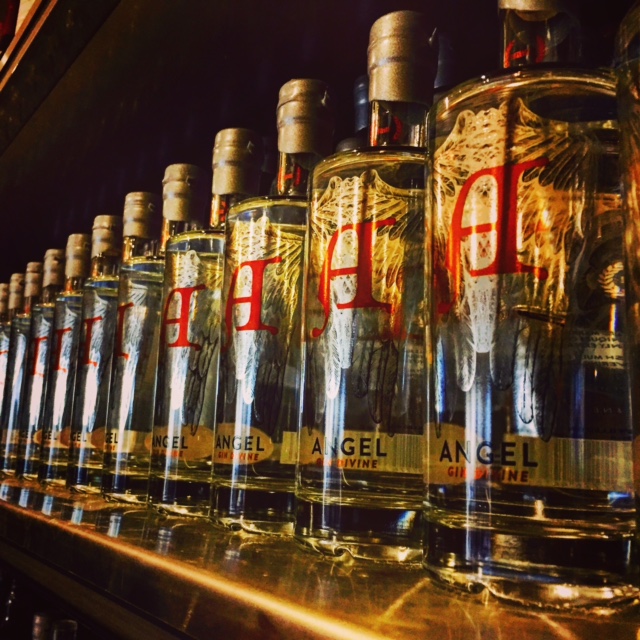Odin on Gin (6)
17 February 2017
Aging White Gin
I think there are two topics here. First, the making, diluting, and bottling of gin, does that require any aging? Secondly, there is a big move towards barrel aged gin. I will start with the first question first ... and I will leave "barrel aged gin" for another post.
White gin requires aging. Not much, but you can't just dilute it and bottle it and sell it. Well, you can, but you won't create the best tasting gin that way. A gin that's bottled right after it's been diluted to bottling strength has two issues:
1. It tickles on the tongue;
2. Taste is not integrated.
The tickling of the tongue is a very good indication that a gin is not yet aged out. The tickling is caused by alcohol sucking water up water. Since alcohol is highly hydrofile or hygroscopic, that makes sense ... if you didn't give your gin enough time after diluting it to bottling strength. If you add water to your gin to bring it down from (for example) 70% to 45%, a process starts that I call "the marriage between water and alcohol". It is not an instant process. It is not a gentle process either. It is a process where some of the water gets dissolved into the alcohol. A process that creates heat (some), slightly lowers the total volume (total volume is lower than the volume of the original alcohol and water), and raises the proof a bit. All because water dissolves - over time - in alcohol.
So here's the first trick in letting your gin age out: dilute it, then give it like five weeks for the marriage to take place. After this period, when you taste the gin, the tickle on your tongue is gone. The five week period also helps the different oils and tastes settle out. Please try it. Make your gin, dilute it, fill one bottle, open the cap on that bottle like every day, and taste is:
- On day one (not coherent, tickly, is this the gin I wanted to make?);
- After three days (nice, its moving in a good direction, wow, this is different shit!);
- After five weeks (when you'll have reached your final taste profile).
This test will teach you that you will achieve around 2/3rds of the final taste profile already after the first three days. It will also teach you that giving it more time really pays of.
I know that waiting for five weeks can be a pain. You need more time to market, and you need more storage space. But in the end, if you want to make the best product, there is no escaping it. There are, however, a few tricks you can use to speed up the process. Here they are:
1. Use an ultrasonic cleaner (50 Watt per liter minimum and at 40 kHz) and give your gin like three ten minute treatments. It won't skip the five week rest period completely, but it will get you closer sooner. The process of especially water marrying to alcohol is sped up. And if you look in your ultrasonic cleaner, while doing it, you'll see for yourself that this process is not a gentle one: the liquids turn grey during the first part of the ultrasonification.
2. Use corks instead of caps on your bottles. A cork may allow for slight air movements in and out. If you allow for that, the process of water dissolving into alcohol can take place in the bottle. But if you have a hard capped bottle, the process of water dissolving in alcohol cannot take place, because its a process that shrinks total volume. A relative vacuum developing in the air pocket would prevent the water to dissolve properly. So ... with hard capped gin bottles, you may want to skip the white gin aging process a bit with ultrasonic treatments, or not and you wait five weeks before you bottle. The good news is: it will improve your drink hugely. And the fun thing is that if you did the tests I proposed, you'll recognize other gins as having had the appropriate amount of aging or not.
Aging white gin is not completely straight forward in the sense that five weeks will do it. Time and again, I learn that the vapor speeds and how deep we go towards tails / the end part of the run influence the aging curve. See the first post on that please. The concise? If you run your rig harder (higher vapor speeds) more aging is needed. If you run longer, more aging is needed. If you run your rig slower and cut a bit earlier, for a more floral gin, the marriage may just take as much as only three weeks to take place.
Next post in this thread will be about barrel aging gin. After that? Lets dive into herbs bills!
Regards, Odin.
Ray Woolhead developed his Angel Gin in record time ... and it is very tasty!

www.iStill.eu
Reactions
Add your comment
All reactions ()
Loading comments..